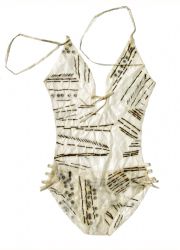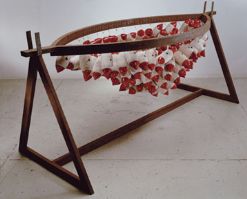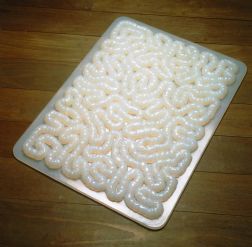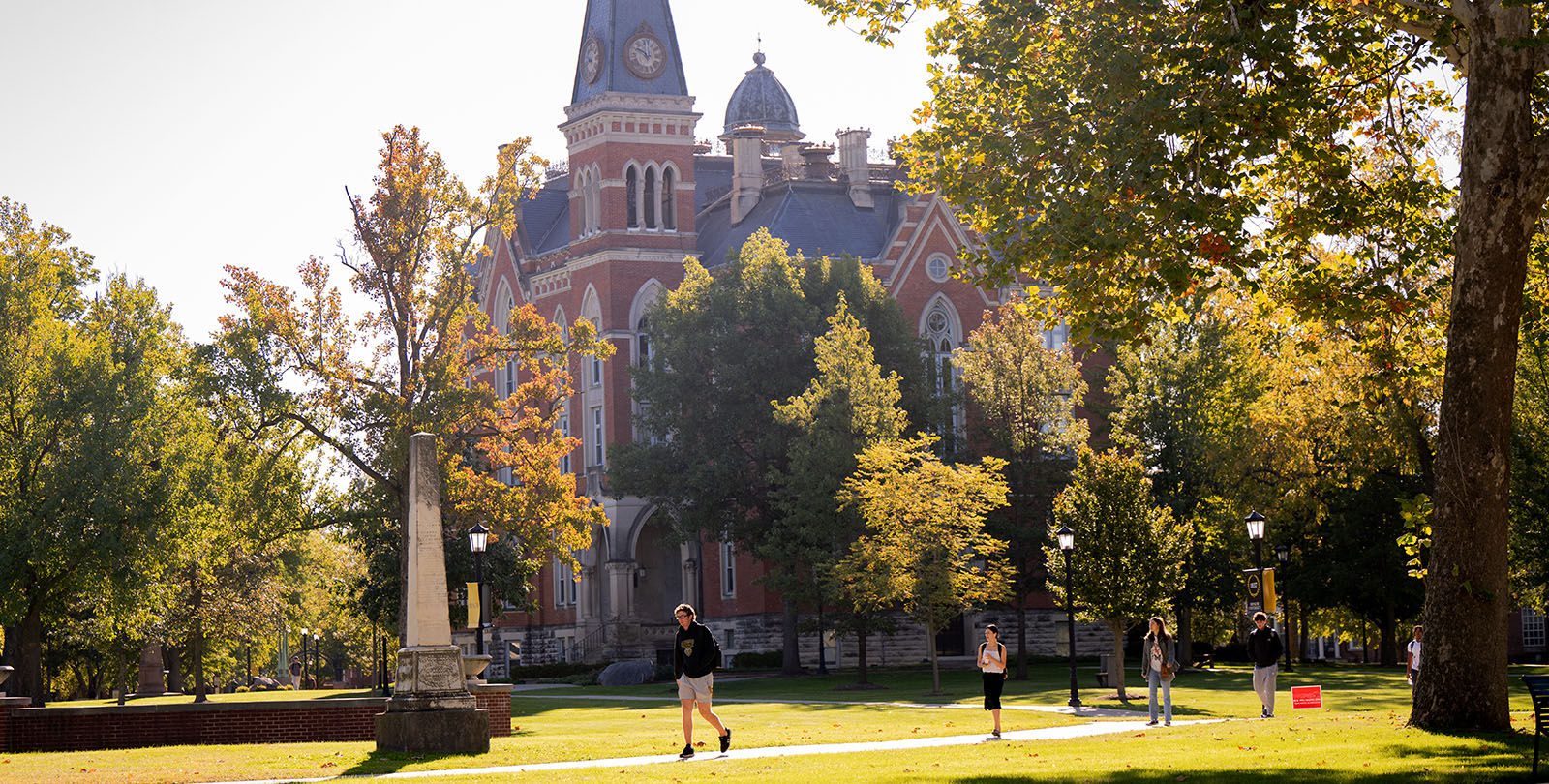'Figures of Thinking,' Featuring Work of 14 Artists, at Peeler Center September 14-December 4
September 4, 2005
Also: 'Material Minutiae' of New Orleans Artist Sally Heller, August 24-December 4; 'Vignettes: Paintings by Leeah Joo,' October 5-November 6
 September 4, 2005, Greencastle, Ind. - "Figures of Thinking: Convergences in Contemporary Cultures," an exhibition that reveals the connective tissue that links contemporary ideas, opens at DePauw University's Richard E. Peeler Art Center on September 14, 2005. Free and open to the public, the art will remain on display through December 4. (at left: Cheryl Yun, Abstract One-Piece from The Cheryl Yun Collection Lingerie/Swimsuit Series, 2003, Gampi Japanese tissue and shrapnel, 22 x 12 inches (Size 8); courtesy of JHB Gallery, New York City)
September 4, 2005, Greencastle, Ind. - "Figures of Thinking: Convergences in Contemporary Cultures," an exhibition that reveals the connective tissue that links contemporary ideas, opens at DePauw University's Richard E. Peeler Art Center on September 14, 2005. Free and open to the public, the art will remain on display through December 4. (at left: Cheryl Yun, Abstract One-Piece from The Cheryl Yun Collection Lingerie/Swimsuit Series, 2003, Gampi Japanese tissue and shrapnel, 22 x 12 inches (Size 8); courtesy of JHB Gallery, New York City)
Curated by Vicky A. Clark and Sandhini Poddar, Figures of Thinking presents an open-ended discourse on the nature of our global society, one that is fraught with anxiety and overwhelmed by information. This is expressed in the work of the 14 artists included in the exhibition: Rina Banerjee, Lesley Dill, Ellen Gallagher, Mona Hatoum, Adrienne Heinrich, Nina Katchadourian, Simone Leigh, Wangechi Mutu, Yuki Onodera, Kathy Prendergast, Barbara Weissberger, Heesung Yang, Zarina, and Cheryl Yun. The intention of the curators is not to present a theoretical argument in support of an overriding projection or definitive position, but rather to disclose and observe the unfolding of experience as a reflection of the imprint  of migrant cultures and the influence of abundantly accessible information.
of migrant cultures and the influence of abundantly accessible information.
The artists included in the exhibition were selected because they share certain visual and conceptual sensibilities, as evidenced by their considered and metaphorical use of materials, willingness to share the intimate and the personal, their confrontation of stereotypes, regard for beauty, and immersion in process. (at right: Simone Leigh, Mami Wata, 2001, terracotta with steel armature, 36 x 72 x 36"; Courtesy of the artist)
In the catalog essay, Clark, who grew up in Los Angeles during the 1960s, and Poddar, who grew up in Hindu India during the 1980s, use an interview-style conversation that informs and shapes their curatorial viewpoint and, ultimately, models their position. Clark opens: “‘Figures of thinking’: I love this idea because it encourages a consideration of many points of view and refuses the harshness of current political and religious rhetoric. It lets us continue to explore possible answers, to let our minds run wild.” Indeed, the imaginations and visual representations of the 14 artists included in this show present a broad and expanded idea of what culture, origin, home, identity, and human values might signify in a time of accelerated globalization.
As postmodernism, identity politics, and feminism (all of the artists in this exhibition are coincidentally women) have become fully assimilated in the mindset and experience
Figures of Thinking: Convergences in Contemporary Cultures taps into theorist and critic Marjorie Garber’s source quote for the title: “Ours is an era that distrusts language, that fears figures of speech, and especially what could be called figures of thinking—ideas and associations that beget ideas, that link to other links in culture…”
Figures of Thinking: Convergences in Contemporary Cultures is accompanied by a catalogue published by the University of Washington Press and co-published by University of Richmond Museums and Pamela Auchincloss/Arts Management. The catalogue features an introduction by the curators, an essay drafted as a dialogue between the two curators, a recommended reading list, and full-color reproductions of artworks by each artist.
The exhibition will feature two ‘Art for Lunch’ Gallery talks:
- October 13, 12:30 p.m. - “Some Women Marry Houses,” featuring Meryl Altman, associate professor of English and director of the women’s studies program
- November 17, 12:30 pm - “The Beginning of the End of
 Self-Portraiture: Beuys and Grrrls and the Self NOW,” Anne Harris, associate professor of art (art history)
Self-Portraiture: Beuys and Grrrls and the Self NOW,” Anne Harris, associate professor of art (art history)
The galleries at the Richard E. Peeler Art Center are open Monday through Friday from 9 a.m. to 4 p.m.; Saturday 10 a.m.-4 p.m.; and Sunday 1-5 p.m. For more information, call (765) 658-4822 or click here.
